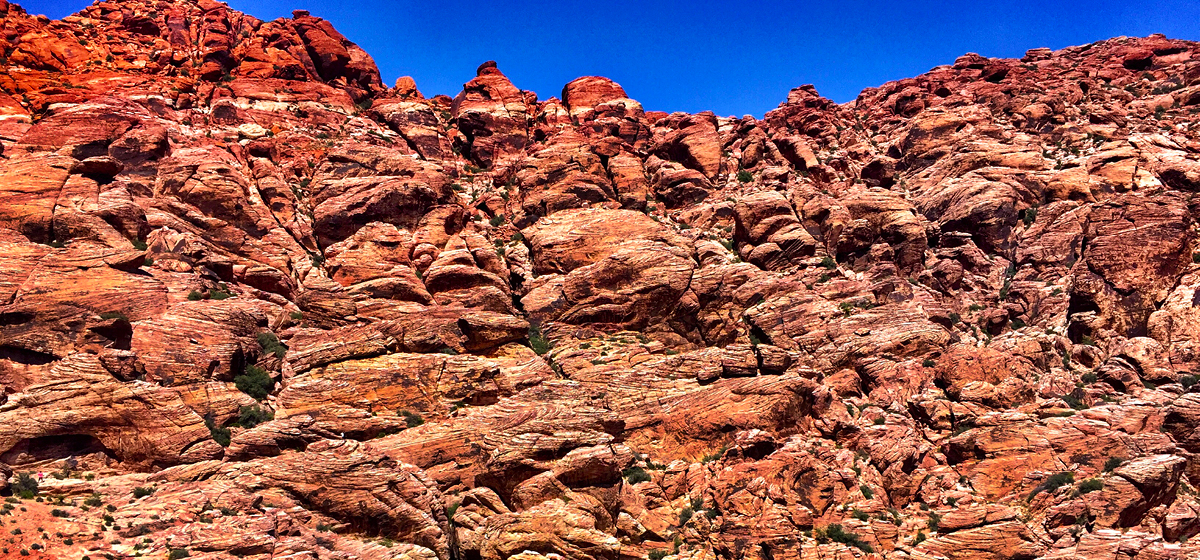Photo by Craig Robbins
100 years ago, President Woodrow Wilson signed the “National Park Service Organic Act.” The legislation was not the first to address a national park. U.S. Grant, for example, signed legislation naming Yellowstone as the nation’s first such park in 1872. But Wilson’s effort was an extension of conservations efforts begun in the 19th century, and it laid the foundation for a system that now includes 400+ sites—59 of which are official national parks.
Inspired by the importance of the legislation and aware of the Act’s 100th anniversary on August 25, 2016, photographer Mark Burns set out to capture the beauty and majesty of the park system in a series of 59 photographs—one for each of the parks. The resulting exhibit is a crowning aesthetic achievement, one that prompted President George H. W. Bush to refer to Burns as a “modern-day Ansel Adams.”
This project began almost six years ago, when Jean Becker, President George H. W. Bush’s Chief of Staff, discussed the possibility of an exhibit. I had researched the impending 100-year anniversary of the National Park Service, and the timing suggested itself for an exhibit, one that could begin at the Bush Presidential Library. We put together an advisory committee and began a collaboration with the National Park Foundation.
It took about six months to assemble the partners and plan, and about four-and-a-half years to photograph.
I don’t think anyone realized how much goes into photographing all 59 National Parks. I’m pretty experienced in this type of planning, and it involved more than I was anticipating. The weather was always an issue. My whole life revolved around the weather cycles. And, even now, there are seven or eight places I wish I could return to and wait for a really interesting cloud formation for just the right photograph.
My Toyota FJ Cruiser accumulated about 160,000 miles. It got me where I needed to be—even when the terrain was tough—and its custom roof rack served not only as a luggage rack, but also as a platform for shooting.
It makes a big difference. When you have brush, or a fence line, or something right in front of you, you change the view and perspective by elevating. It eliminates interference from foreign objects and offers a slightly more appealing perspective.
I love to work with it, for one thing. But because the exhibit was tied in to a historical event, I thought it would be a bridge to the signing of the 1916 legislation. When you see the photographs that I took in 2013, 2014, and 2015, and see that they look much like the photographs taken in 1916, or the 20s and the 30s, it shows that the National Park Service has done its job of protecting the lands. Black and white was the bridge back to the past century for me and, I hope, for the viewer, too.
 I started the project with four-by-five field cameras. It would have been nice to do the entire project with that equipment, but it wasn’t feasible. It’s just too slow of a workflow in terms of processing. So, I shot most of the parks with a couple of Nikon D800E cameras, always on tripod with cable release. The cameras were 36-megapixel and compact, light enough to backpack with, still had the quality detail that I needed, and the digital format allowed me to know day-by-day whether what I shot was what I needed for the project.
I started the project with four-by-five field cameras. It would have been nice to do the entire project with that equipment, but it wasn’t feasible. It’s just too slow of a workflow in terms of processing. So, I shot most of the parks with a couple of Nikon D800E cameras, always on tripod with cable release. The cameras were 36-megapixel and compact, light enough to backpack with, still had the quality detail that I needed, and the digital format allowed me to know day-by-day whether what I shot was what I needed for the project.
If a shot involved the moon, I used the U.S. Naval Observatory website for the lunar times and angles. I also looked at tide tables when water was involved. And, of course, depending on the park and the shot I wanted, I had to think about the season and the vegetation that would be present. For much of this project, I was operating by nature’s cycles, and it was sometimes difficult to come back to an urban area and live by hourly schedules of appointments and meetings. It’s a whole different scheme of living.
I didn’t have much trouble with faulty equipment, and my vehicle got me where I needed to be. I did have wildlife issues, occasionally. People ask about bears, and I saw a lot of grizzlies and black bears. But it was probably the moose that were the bigger problem. They can be aggressive. They’re large, and they chased me around a few times in Grand Teton National Park and Yellowstone and in Denali. Once, I had set my camera up on a tripod, and I heard a rustle behind me, and a moose comes popping out of the trees about 12 yards behind me. He chased me around my vehicle, before he got distracted and left. Moose are unpredictable.
Alaska is a great state! I loved it, and it was almost life changing, in a way. They have eight National Parks, and transportation is a real challenge. There aren’t a lot of roads, so you rely on bush planes or float planes, and I have all the respect in the world for the pilots. We would land on gravel bars, and you would see it in the distance, so small, and think, “There’s no way we can land on that.” But we did. A couple of the photographs in the exhibit were taken from one of those planes, flying low with the doors off. At times, we would fly over hundreds of caribou. One time we flew over a grizzly that was running and, as we flew over, it stopped, stood up, and looked at us as we flew by. Some of the parks are 150 miles from any sort of civilization, and being in that kind of wilderness is special.
Yosemite. If you were to travel to one park to understand what a National Park is, Yosemite would be it. The park is much bigger than just Yosemite Valley, but the Valley has Bridal Veil Falls, Upper and Lower Yosemite Falls, and Vernal Falls behind Glacier Point. There’s El Capitan, which is an incredible 3,000-foot granite wall. The beauty of the waterfalls and the evergreens and the sheer grandeur of the 3,000-foot granite cliffs make it my favorite park. It is beautiful.
Big Bend is the best known National Park in Texas, and it’s a great place, with all sort of unique features, from being an International Dark Sky Place (so designated by the International Dark-Sky Association, which promotes “excellent stewardship of the night sky”) to a mecca for flora and fauna, and, of course, its beauty. But Guadalupe Mountains National Park is also a treasure. The same rock escarpment that forms the basis of Carlsbad Caverns also forms the Guadalupe Mountains. When you are on the desert floor, it’s sandy and rocky, with scrubby plants, but when you get up in the mountains and hike to the peak, you see the evergreens and the willow alpine meadow areas. It’s hard to believe you are so close to the desert floor that you just stood on.
 I’m kind of having withdrawals from not being in the parks. But I’m already re-visiting some of these parks with a 1959, 8-by-10 view camera that I love. It’s probably my favorite camera. It’s pretty much the same camera photographers would have used in 1916, and I want to shoot with equipment similar to what they shot 100 years ago. It’s a lot more cumbersome than the camera I used for the National Parks Photography Project, but I won’t be re-visiting all 59 parks, and I now have a better idea of where to set up.
I’m kind of having withdrawals from not being in the parks. But I’m already re-visiting some of these parks with a 1959, 8-by-10 view camera that I love. It’s probably my favorite camera. It’s pretty much the same camera photographers would have used in 1916, and I want to shoot with equipment similar to what they shot 100 years ago. It’s a lot more cumbersome than the camera I used for the National Parks Photography Project, but I won’t be re-visiting all 59 parks, and I now have a better idea of where to set up.
I’d like to do more photography in Texas, and a lot of friends have been suggesting parks in Texas. Being a native Texan, I’d like to explore the state park system more. Some of the early photographic processes lend themselves to the Texas parks, so it’s something I’d like to do.
I hope so! It’s changed my views. I would like people to see the photographs and then travel to the parks. I think if people go to the parks and stand in the midst of that beauty, the desire to preserve that beauty will be contagious.
It began at the Bush Presidential Library, and 41,788 people visited it there over a three-month period. I was proud of that. And then it went to the Walker Education Center in Huntsville, and I was pleased with its reception there. It is now at the Pearl Fincher Museum of Fine Arts and 28 of the photographs are at The Houston Natural Museum of Science.
Visitors can see the photographs at the Pearl Fincher Museum of Fine Arts in Spring, Texas through September 3. The photographs will be on display at the Houston Natural Museum of Science through September 28. Versions of the exhibit will also show at the Lyndon Baines Johnson Presidential Library and the George W. Bush Library later in the year.
Mark Burns, who lives in Montgomery County, Texas, is one of only a handful of photographers to capture all 59 National Parks, and the only one to exhibit his works in black and white. You can learn more about the National Parks Photography Project here: thenationalparksphotographyproject.com.


